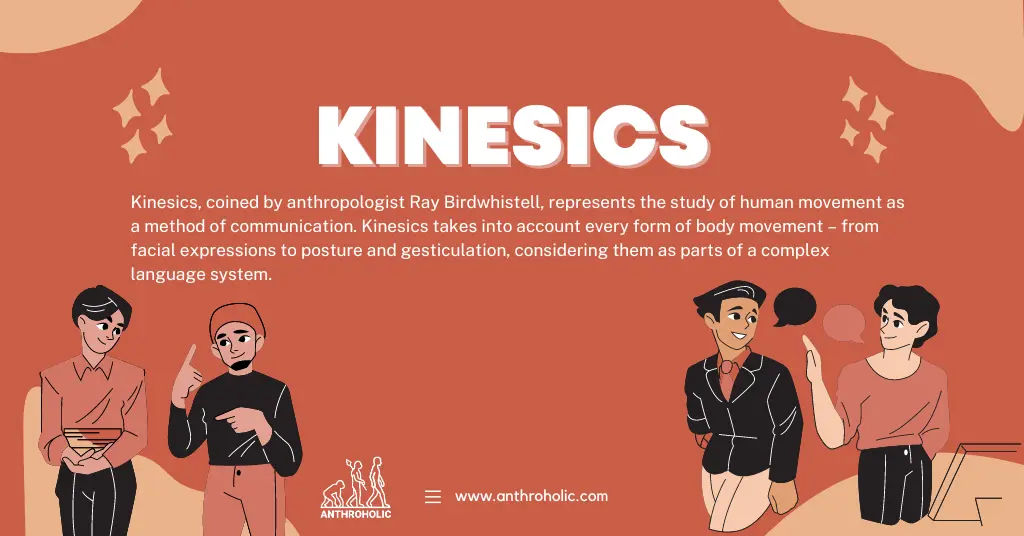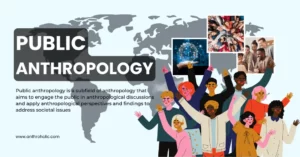AI Answer Evaluation Platform Live Now. Try Free Answer Evaluation Now
Kinesics
Kinesics, coined by anthropologist Ray Birdwhistell, represents the study of human movement as a method of communication [1]. The body is a powerful tool for communication and this article seeks to explore the role of kinesics in linguistic anthropological research.

Understanding Kinesics
Kinesics takes into account every form of body movement – from facial expressions to posture and gesticulation, considering them as parts of a complex language system. This can include:
- Facial expressions
- Body posture
- Gestures
- Eye movement and behavior
Each of these elements provides insights into a person’s feelings, attitudes, and intentions beyond verbal communication.
The Importance of Kinesics in Anthropology
The field of anthropology, especially linguistic anthropology, is particularly interested in the exploration of kinesics. Anthropologists seek to understand the diverse cultural codes and social norms that govern nonverbal communication across societies [2].
- Cultural Codes: Cultures may have specific facial expressions, gestures, or body postures, which carry distinct meanings. Understanding these can offer a more comprehensive view of a society.
- Social Norms: Societies also have accepted norms of nonverbal communication. Studying these allows anthropologists to further delve into social structures and power dynamics.
Types of Kinesics
The study of Kinesics is often categorized into five key types:
| Type | Description |
|---|---|
| Emblems | These are culturally understood substitutes for verbal expressions. |
| Illustrators | They complement or illustrate the verbal message. |
| Affect Displays | These are the facial and body expressions showing emotion. |
| Regulators | Non-verbal cues that control, manage, or regulate the pace and flow of communication. |
| Adaptors | These are movements which may be unconscious, but reveal psychological states [3]. |
Applications of Kinesics in Anthropological Research
Kinesics provides anthropologists with a deeper understanding of human interactions. Here’s how:
- Social Interactions: Kinesics can reveal underlying social dynamics. For example, differences in body language may highlight social hierarchies or interpersonal relationships.
- Cross-Cultural Comparisons: Kinesics offers a way to compare communication practices across different cultures, providing insights into cultural identities.
- Historical Perspectives: As nonverbal cues evolve over time, studying them can shed light on historical shifts in societies and cultures.
The Role of Technology in Kinesics Study
In recent years, the application of technology in studying kinesics has gained traction. The use of AI and machine learning has been influential in recognizing and analyzing patterns of nonverbal behavior, augmenting the understanding of anthropologists and linguists [4].
The Role of Kinesics in Linguistic Anthropology
Given its nature, linguistic anthropology is a field that greatly benefits from the inclusion of kinesics. Nonverbal cues enrich the study of human communication, assisting anthropologists to comprehend social contexts and individual behaviors in detail.
Significance of Context
A key component in the understanding of kinesics is the context in which communication happens. Nonverbal cues can be greatly influenced by situational elements, such as the location, interpersonal dynamics, cultural backdrop, and social status of the participants. Context, therefore, plays a vital role in interpreting these cues.
The Connection between Verbal and Non-Verbal Communication
Linguistic anthropology studies how language is used in social interactions. Kinesics extends this by examining how non-verbal communication complements verbal communication. When integrated, they provide a holistic view of human communication.
For instance, while a person’s words may seem polite, their body language might suggest discomfort or disinterest. Recognizing these inconsistencies can provide anthropologists with a more comprehensive understanding of the interaction.
Culture-Specific Body Language
Cultures around the world have unique kinesic signals. An action that may be considered respectful in one culture might be seen as rude in another. For example, eye contact is seen as a sign of respect and attentiveness in some Western cultures, whereas it might be viewed as disrespectful in some Asian cultures.
Understanding these variations in body language is crucial for anthropologists when studying and comparing cultures.
Future of Kinesics
The study of kinesics continues to evolve, particularly with advancements in technology. This has the potential to open up new frontiers for anthropological research.
Emerging technologies such as virtual reality and advanced motion capture can provide more nuanced ways to observe and analyze body language. Furthermore, advancements in machine learning and artificial intelligence could lead to more sophisticated tools for the interpretation of nonverbal communication.
Conclusion
Kinesics is an invaluable tool in the realm of linguistic anthropology. By analyzing the many ways humans use their bodies to communicate, we can gain a deeper understanding of cultural norms, social structures, individual behaviors, and the intricate complexities of human communication. The future of kinesics, especially with the support of advancing technologies, promises to provide more comprehensive insights into the world of nonverbal communication.
References
[1] Birdwhistell, R. L. (1970). Kinesics and Context: Essays on Body Motion Communication. University of Pennsylvania Press.
[2] Kendon, A. (2004). Gesture: Visible Action as Utterance. Cambridge University Press.
[3] Ekman, P., & Friesen, W. V. (1969). The Repertoire of Nonverbal Behavior: Categories, Origins, Usage, and Coding. Semiotica.
[4] Vinciarelli, A., Pantic, M., & Bourlard, H. (2009). Social signal processing: Survey of an emerging domain. Image and Vision Computing.




